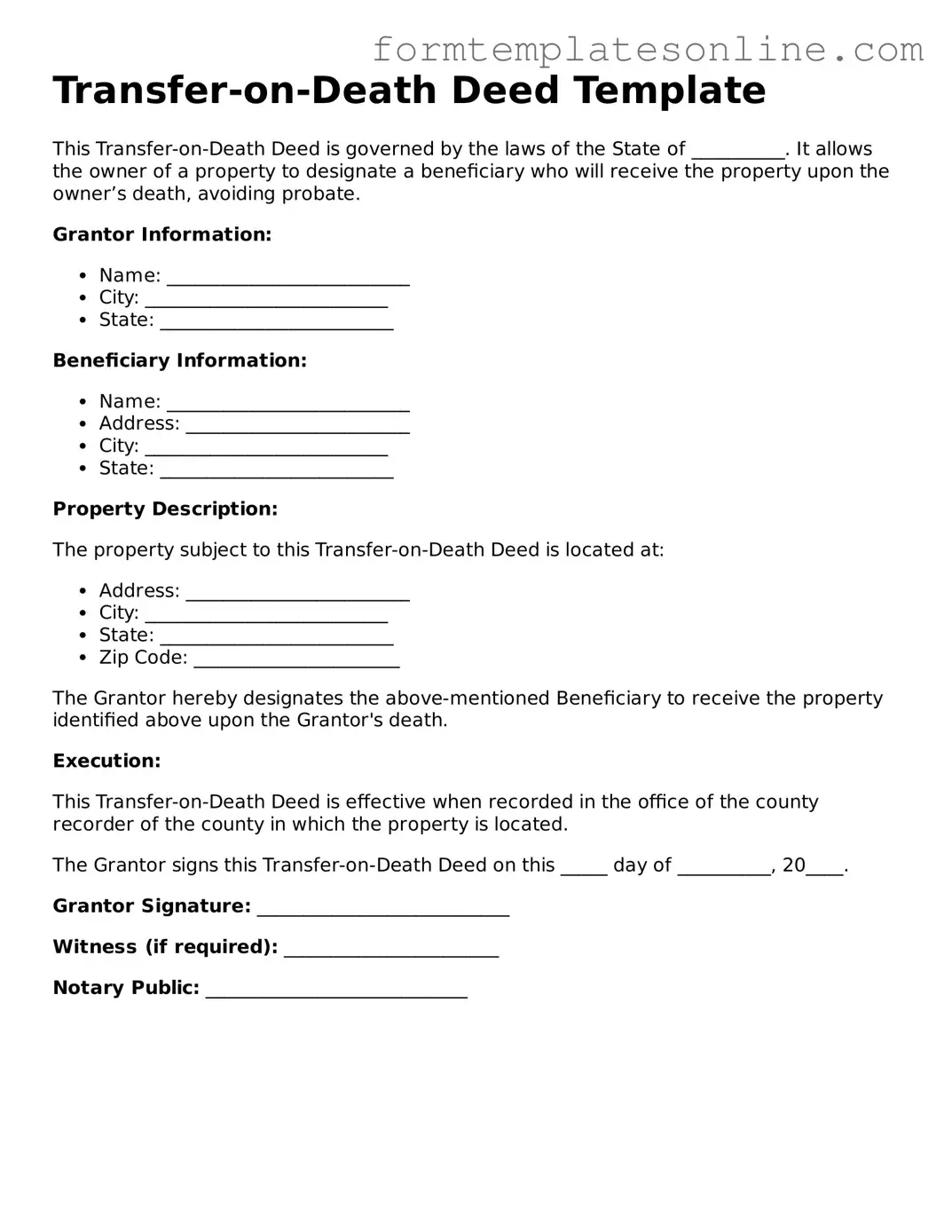What is a Transfer-on-Death Deed?
A Transfer-on-Death Deed (TOD) is a legal document that allows a property owner to designate one or more beneficiaries to receive their real estate upon their death. This deed effectively transfers ownership without the need for probate, simplifying the process for heirs and ensuring a smooth transition of property ownership.
Who can use a Transfer-on-Death Deed?
Any individual who owns real estate can utilize a Transfer-on-Death Deed. This includes homeowners, landlords, and property investors. However, it's essential to check state laws, as the availability and specific requirements for a TOD deed can vary by state.
How does a Transfer-on-Death Deed work?
When a property owner completes a TOD deed and files it with the appropriate county office, the designated beneficiaries are named to inherit the property automatically upon the owner's death. The deed remains revocable, meaning the owner can change or revoke it at any time before their death. Upon the owner's passing, the beneficiaries can claim the property without going through probate.
Are there any limitations on using a Transfer-on-Death Deed?
Yes, there are some limitations. For instance, a TOD deed cannot be used for properties held in joint tenancy or for properties that are part of a trust. Additionally, some states may have restrictions on the types of properties that can be transferred using this deed, such as commercial properties or properties subject to liens.
What are the benefits of using a Transfer-on-Death Deed?
The primary benefit of a Transfer-on-Death Deed is that it allows property to pass directly to beneficiaries without going through the probate process, which can be time-consuming and costly. This deed also provides the owner with the flexibility to retain full control of the property during their lifetime, as it can be revoked or altered as needed.
How do I create a Transfer-on-Death Deed?
Creating a Transfer-on-Death Deed typically involves filling out a specific form that includes details about the property, the owner, and the beneficiaries. It's advisable to consult with a legal professional to ensure that the deed complies with state laws and accurately reflects your intentions. After completing the form, it must be signed, notarized, and filed with the appropriate county office.
Can I revoke a Transfer-on-Death Deed?
Yes, you can revoke a Transfer-on-Death Deed at any time before your death. This can be done by filing a revocation form with the county office where the original deed was recorded. It's important to ensure that the revocation is properly documented to avoid any confusion for your beneficiaries in the future.
What happens if I don’t use a Transfer-on-Death Deed?
If you choose not to use a Transfer-on-Death Deed, your property will likely go through probate after your death. This process can be lengthy and may incur various fees, potentially reducing the inheritance your beneficiaries receive. Without a TOD deed, the distribution of your property will follow state intestacy laws if you do not have a will, which may not align with your wishes.
Is a Transfer-on-Death Deed the right choice for everyone?
A Transfer-on-Death Deed can be a great option for many property owners, but it may not be suitable for everyone. Consider your specific circumstances, such as the size of your estate, your family dynamics, and your long-term plans for the property. Consulting with an estate planning professional can help you determine if a TOD deed is the best fit for your needs.
